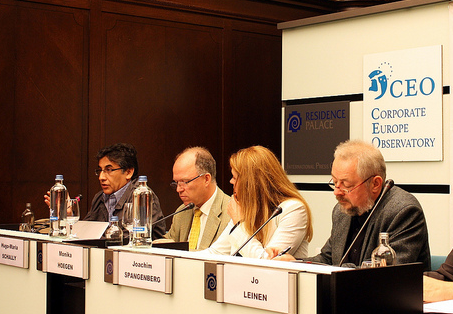 Has the green economy failed us? The latest jobs report showed modest growth in the private sector with roughly 80,000 new jobs (the disappointment in the jobs report was partially due to the public sector shedding some 14,000 jobs last month). It’s not as fast a recovery as some would like, and the economy continues to dominate headlines.
Has the green economy failed us? The latest jobs report showed modest growth in the private sector with roughly 80,000 new jobs (the disappointment in the jobs report was partially due to the public sector shedding some 14,000 jobs last month). It’s not as fast a recovery as some would like, and the economy continues to dominate headlines.
Natural Capitalism was perhaps the foundational work showcasing how we could revolutionize our economy, create millions of jobs, and improve our social and environmental conditions with a transition to technologies and mindsets that allowed for change. But that was written over 20 years ago. What’s happened, and more importantly, why isn’t the economy recovering faster now through green jobs development?
The answer, according to Robert Reich, former Secretary of Labor, is that we’re historically, in terms of who has money to spend, at a place that is reminiscent of the leadup to the Great Depression. Keep in mind that an astonishing 70% of our GDP is derived from consumer spending. It’s about half of that in China, just for comparison, where exports, government spending, and a whole host of other stimuli keep consumer spending as a less important variable in economic success.
Consumers have been encouraged to, and successfully have, shopped us out of recession before. Either through excessive debt in credit cards, unsustainable bubbles like the most recent housing bubble, or through new entrants to the workforce (women), we’ve continued to shoulder the majority of the burden in terms of getting the economy going.
Statistically speaking, most Americans spend everything they make, and then some. Except the rich. Some key statistics, according to Reich:
- Throughout the 1920’s, income became increasingly concentrated among the rich. By 1928, the top 1% made 23.94% of all income. (1929, of course, was Black Friday and the beginning of the Great Depression).
- The same trend has been going on since 1980, and as of a few years ago, 23.5% of income went to the top 1%.
- In 1953, the top 1% made 9.9% of total income, and 30 years of economic prosperity followed.
Measures like Property Assessed Clean Energy (PACE) can allow the middle class to once again spend money they don’t have, and can create jobs in the green economy. The idea is that the upfront cost of the solar, energy efficiency, or other retrofits to homes can be borne by public bond, with a lien placed on the home to be paid off over time through increased property taxes. PACE is a popular concept that makes good economic sense and needs to be supported, though it has hit hurdles that have proven difficult to overcome.
Other than some innovative new policies like PACE, crowdfunding and other “new economy” developments may help drive economic growth, but the bottom line is that the rich simply don’t spend the way that the middle class does, and therefore as wealth continues to amass in the top 1%, the economy becomes top heavy and will inevitably continue to struggle through a longer than necessary recession.
Photo courtesy of Corporate Europe Observatory on Flickr Creative Commons

